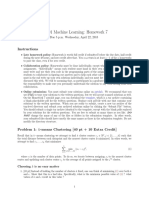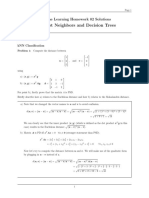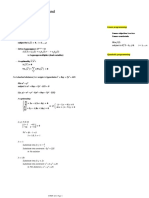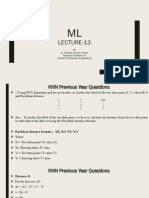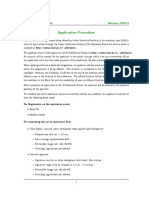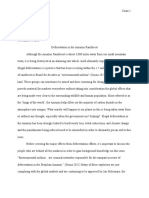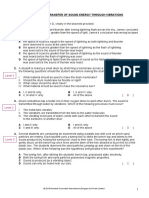0% found this document useful (0 votes)
22 views5 pagesML Chapter 1 - Problems and Solutions
The document presents various mathematical and logical problems along with their solutions, focusing on concepts such as multiplication, logical deductions, classification of attributes, and relationships in data analysis. It also discusses KNN prediction, feature scaling, and the distinction between feature selection and feature extraction. Each problem illustrates different learning paradigms, including supervised and deductive reasoning.
Uploaded by
vikram_1612Copyright
© © All Rights Reserved
We take content rights seriously. If you suspect this is your content, claim it here.
Available Formats
Download as PDF, TXT or read online on Scribd
0% found this document useful (0 votes)
22 views5 pagesML Chapter 1 - Problems and Solutions
The document presents various mathematical and logical problems along with their solutions, focusing on concepts such as multiplication, logical deductions, classification of attributes, and relationships in data analysis. It also discusses KNN prediction, feature scaling, and the distinction between feature selection and feature extraction. Each problem illustrates different learning paradigms, including supervised and deductive reasoning.
Uploaded by
vikram_1612Copyright
© © All Rights Reserved
We take content rights seriously. If you suspect this is your content, claim it here.
Available Formats
Download as PDF, TXT or read online on Scribd
/ 5








